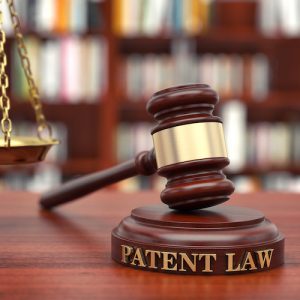”A litigant can improve its chances of winning a motivation to combine or modify (MTC) argument by knowing how the PTAB is analyzing and characterizing MTC arguments.”
 Since the America Invents Act ushered in a series of sweeping changes to the U.S. patent system in 2011, IP stakeholders have been grappling with Inter Partes Review proceedings (IPRs) before the Patent Trial and Appeal Board (PTAB). More than 8,000 IPR petitions have been filed since 2012.
Since the America Invents Act ushered in a series of sweeping changes to the U.S. patent system in 2011, IP stakeholders have been grappling with Inter Partes Review proceedings (IPRs) before the Patent Trial and Appeal Board (PTAB). More than 8,000 IPR petitions have been filed since 2012.
IPRs differ from court proceedings in many ways, including more restricted discovery, tighter deadlines, and particular rules and procedures for the submission of arguments and evidence. Despite these differences, the substantive law underlying the patent challenges is the same for IPRs and court proceedings. In an IPR, a Petitioner is allowed to challenge a patent’s validity under the doctrines of anticipation or obviousness. These same challenges are available in court, and the substantive law for anticipation and obviousness is theoretically supposed to be the same for IPRs or for court proceedings.
As patent practitioners are always interested in developing best practices for advising clients on strategies for attacking and defending patents, many have studied and written about (1) general statistics regarding institution rates and win rates in IPRs and (2) the rules, procedures and doctrines that are specific to IPRs. Particular attention has been paid to areas where IPRs differ from court proceedings. For example, until recently, the PTAB utilized a different standard than the courts for construing claim terms, and a simple search on Google reveals an unending number of publications on the topic. And for good reason. Knowing the differences between the two forums can help a practitioner develop more effective strategies for choosing a preferred forum and crafting arguments in each forum.
Not So Obvious
Given that the substantive doctrines of anticipation and obviousness have existed and have been refined for more than a century, and that these doctrines are the same for PTAB and federal court proceedings, practitioners have tended to focus more on the doctrines, rules and procedures specific to IPRs when publishing on IPR practice. An in-depth study of obviousness in IPRs, however, reveals significant differences in the way the PTAB analyzes obviousness as compared to the courts and issues where the PTAB’s approach has changed over time. Over 90% of final written decisions in IPRs in the last three years have included obviousness grounds (as compared to less than 30% for anticipation). The doctrine of obviousness includes a multi-factor test, each factor including numerous sub-doctrines that can impact the analysis. Understanding precisely how the PTAB is analyzing and treating obviousness can improve a litigant’s chances of success in an IPR, whether as a patent owner or a patent challenger.
The proprietary study, based on a careful review of over 400 final written decisions from IPRs, breaks down the PTAB’s analysis of obviousness, including fundamental factors such as motivation to combine or modify (MTC), teaching away, reasonable expectation of success, and secondary considerations. Within certain factors, the study tracks numerous principles that the PTAB relies on in assessing the parties’ arguments. For example, in a final written decision where the PTAB finds a lack of a MTC, the PTAB may reject a patent owner’s arguments based on several different principles. The study tracks the application of these principles to determine which arguments are more/less successful. The data compiled from the study provides numerous insights that practitioners can use to maximize the effectiveness of their IPR strategies and arguments. Below are five interesting takeaways from the study.
1. Characterization of MTC Arguments
The vast majority of obviousness grounds include competing arguments on whether a person of ordinary skill would have had a motivation to combine or modify prior art references, and many obviousness grounds are won or lost on this issue. The law on obviousness includes principles (much like the canons of claim construction), that guide the courts in analyzing whether a MTC exists. For example, one such principle states that a motivation to combine is not nullified merely because the motivating benefit comes at the expense of a different benefit. Another states that there may not be a motivation to combine where the combination would change the principle of operation of a prior art reference.
The study reveals that, in certain respects, the PTAB is deconstructing and characterizing MTC arguments according to such principles to a much greater extent than the courts. In addition, in characterizing MTC arguments, the PTAB is relying on certain principles to a much greater extent than the courts. In some cases, the data is strikingly different. For example, a word search for one particular principle, across all IPR final written decisions since 2012, reveals hundreds of decisions where a MTC argument was characterized according to the specific principle. The same word search across all Federal Circuit opinions (since the Court was formed in 1982), reveals less than 10 opinions. There are multiple examples of this phenomenon. A litigant can improve its chances of winning a MTC argument by knowing how the PTAB is analyzing and characterizing MTC arguments.
2. MTC Tension Points
In addition to understanding the various principles guiding the MTC analysis, a litigant is wise to study the interplay between competing principles. Like the canons of claim construction, there is tension between many of the principles used by the PTAB in analyzing whether a MTC exists. For example, while the PTAB often rejects a patent owner’s attempt to narrowly construe the “purpose” of a prior art reference (to contrast it with the “purpose” of a secondary reference), there are cases where the PTAB finds no MTC because the prior art is narrowly tailored to a specific purpose, or where a prior art reference is directed to solving a different problem than a secondary reference. Knowing these tension points can help patent challengers and patent owners in the selection of evidence and crafting of arguments on MTC.
3. Teaching Away
Prior art references cannot be combined where one of the references “teaches away” from the combination. Patent owners are very familiar with the doctrine of teaching away because it can be relied on to defeat an obviousness challenge, even in cases where prima facie obviousness has been established. Accordingly, when faced with a patent challenge, patent owners routinely look to develop evidence of a teaching away. What patent owners may not realize is that while the law on teaching away is theoretically the same in the courts and the PTAB, teaching away arguments are much more successful in court. The study not only shows a substantial difference in results for patent owners between the two forums, but also shows key differences in the reliance on certain principles within the doctrine of teaching away. Understanding how the PTAB is analyzing teaching away arguments can impact a litigant’s IPR strategy.
4. Secondary Considerations
A patent owner can also defeat an obviousness challenge by establishing the existence of secondary considerations of non-obviousness. Indeed, even where a prima facie case of obviousness exists, a compelling showing of secondary considerations can defeat the obviousness challenge. Accordingly, secondary considerations have long been an arrow in the patent owner’s quiver when it comes to obviousness. The study shows that findings of probative secondary considerations were virtually non-existent for the first several years of IPR practice. The study also shows, however, that patent owners have had much greater success with secondary considerations in the past two years. Knowing trends at the PTAB, and understanding how the PTAB treats secondary considerations, can improve a litigant’s chances on obviousness grounds.
5. Patent Owner Wins
Although a patent owner can defeat an obviousness challenge by demonstrating (1) a lack of a MTC, (2) the existence of probative secondary considerations, (3) a teaching away, or (4) no reasonable expectation of success in combining or modifying prior art, the study shows that the most successful argument for patent owners on obviousness grounds in IPRs has been establishing that the prior art is lacking an element of the challenged claim. Patent owners are thus wise to consider whether such an argument can be made in response to an IPR challenge. These arguments are not only dependent upon the prior art disclosures, but also dependent upon the construction of the claim term that is allegedly missing from the prior art. Patent owners accordingly must consider whether a particular construction would be consistent with any positions needed for enforcement of its patent. Patent challengers, on the other hand, are wise to anticipate potential patent owner arguments regarding elements “missing” from the prior art. Doing so will not only aid in the selection of prior art for challenges, but also in whether additional arguments or evidence will be necessary in the event that an anticipated claim construction argument from the patent owner is successful.

![[IPWatchdog Logo]](https://ipwatchdog.com/wp-content/themes/IPWatchdog%20-%202023/assets/images/temp/logo-small@2x.png)

![[Advertisement]](https://ipwatchdog.com/wp-content/uploads/2024/04/Artificial-Intelligence-2024-REPLAY-sidebar-700x500-corrected.jpg)
![[Advertisement]](https://ipwatchdog.com/wp-content/uploads/2024/04/Patent-Litigation-Masters-2024-sidebar-700x500-1.jpg)

![[Advertisement]](https://ipwatchdog.com/wp-content/uploads/2021/12/WEBINAR-336-x-280-px.png)
![[Advertisement]](https://ipwatchdog.com/wp-content/uploads/2021/12/2021-Patent-Practice-on-Demand-recorded-Feb-2021-336-x-280.jpg)
![[Advertisement]](https://ipwatchdog.com/wp-content/uploads/2021/12/Ad-4-The-Invent-Patent-System™.png)






Join the Discussion
4 comments so far.
Night Writer
March 18, 2019 05:38 amThe biggest way to combat a 103 rejection is to argue that an element alleged to be disclosed by the references is in fact not disclosed. There are many ways to make these arguments and they account for something like 80-90 percent of successful arguments at the PTAB.
Jeff
March 17, 2019 03:55 amWhat is the study and how can it be accessed?
Joachim Martillo
March 16, 2019 09:40 pmMost decisions to invalidate on the basis of obviousness are weak in demonstrating that a POSA would be able to implement the alleged obvious combination without hindsight from enablement of the written description.
From KSR v. Teleflex.
Glen Wade Duff
March 16, 2019 02:46 pmNow this is a helpful review. It clarifies many of my previous understandings. Thanks for writing and sharing this John & Gene.